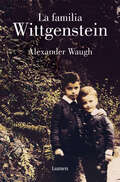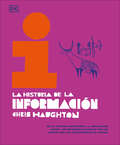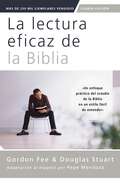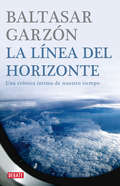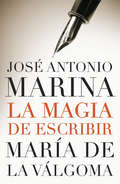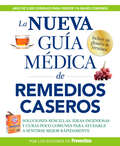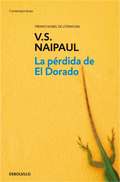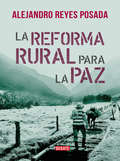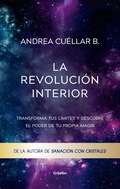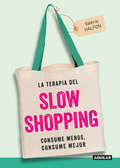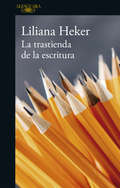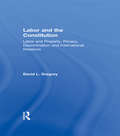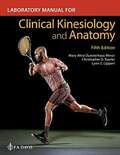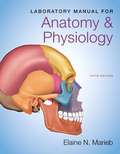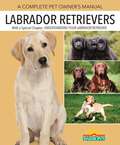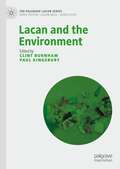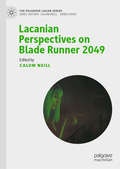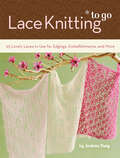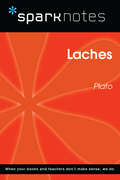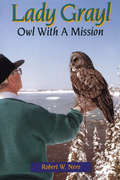- Table View
- List View
La familia Wittgenstein
by Alexander WaughLa historia de una de las familias más excéntricas, geniales y revolucionarias del siglo XX. «Extraordinario y sorprendente. [...] Encaja a la perfección en la larga lista de obras maestras de no ficción impulsadas por la embriagadora riqueza de la Viena de fin de siglo. [...] Apasionante.»The New York Observer La historia de la familia Wittgenstein es la historia del siglo XX. Karl Wittgenstein fue un industrial millonario vienés, converso y patricio, con especial debilidad por el arte y la alta cultura. Sus ocho hijos nacieron aún bajo el signo del Imperio austrohúngaro, que se extinguiría con la Primera Guerra Mundial. La vida de todos ellos estuvo marcada por el espíritu de la Viena finisecular, aquella que vería crecer a escritores como Robert Musil o Joseph Roth, músicos como Mahler o Richard Strauss, y pintores como Gustav Klimt. Por el palacio de los Wittgenstein desfilaron personalidades de la talla de Brahms o Sigmund Freud. Sin embargo, esa atmósfera de prosperidad ocultaba tensiones y amarguras, producto del carácter despótico del padre, que llevaron a tres de los hermanos al suicidio. El cuarto, Paul Wittgenstein, llegó a ser un pianista excelente, aunque durante la Gran Guerra perdió la mano derecha. Quizá el más célebre de la familia sea el pequeño de los hermanos, Ludwig Wittgenstein, el gran filósofo, compañero de pupitre de otro vienés famoso: Adolf Hitler. Desafiando la autoridad paterna, Ludwig se negó a involucrarse en el negocio familiar y se marchó a Inglaterra para estudiar matemáticas y más tarde filosofía y lógica en Cambridge, con Bertrand Russell, quien siempre le consideró su alumno más brillante. Este libro, adictivo y conmovedor, constituye la primera biografía íntima de una de las familias más excéntricas, geniales, desgraciadas y fascinantes del siglo XX. Reseñas:«La historia de la familia Wittgenstein contiene tantas novelas como miembros de la estirpe. Y, una más, la historia entera del siglo XX.»La Vanguardia «Entretenido y muy recomendable.»Babelia «Un retrato literariamente inmenso.»Kirkus Reviews «La historia de este libro es tan interesante que llama la atención que nunca se haya contado de esta manera. [...] Es difícil imaginar otro relato que muestre tanta fluidez, ingenio y atención al detalle.»Literary Review «Maravilloso. Una aguda combinación de una formidable erudición [...] y un gran ojo para el absurdo. [...] Un volumen magníficamente refrescante que merece un amplio número de lectores.»The Independent «Waugh ha hecho un trabajo magistral desenredando una masa de complejidades financieras y psicológicas […]. Su escritura es ágil, segura y colorida [...] Una lectura placentera.»The Telegraph «Una obra de auténtico descubrimiento y de narrativa trepidante. Una biografía memorable, no se la pierdan.»London Evening Standard «Un relato literario sumamente ameno y meticulosamente investigado.»Terry Eagleton, The Guardian «Una lectura absorbente.»Nicholas Lezard, The Guardian «Waugh nos cuenta al menos una anécdota increíble por página mientras describe a este grupo asombrosamente inadaptado de locos cultivados.»Bloomberg
La historia de la información (The History of Information): De las pinturas rupestres a la revolución digital: un recorrido ilustrado por los avances que han transformado el mundo
by Chris HaughtonEmprende junto a tus hijos un inolvidable recorrido por la historia global de la información y la comunicación.¿Qué es lo que hace que la tecnología no caiga en desuso y esté en constante desarrollo? La respuesta es: ¡la información! La manera en la que almacenamos y compartimos información ha cambiado mucho a lo largo de la historia y ha jugado un papel fundamental en la evolución de todos los aspectos de nuestra sociedad, como el social, el político o el económico.Pasa las páginas de esta enciclopedia para descubrir cómo el desarrollo de la comunicación y la recopilación de datos e información nos ha llevado al progreso tecnológico y a la vida tal y cómo la conocemos.En su interior, encontrarás: La historia de la información y la comunicación, desde el surgimiento de los primeros idiomas y las pinturas rupestres hasta las diferentes formas en las que nos comunicamos hoy en día. Contenido escrito por el autor e ilustrador mundialmente famoso y ganador de múltiples premios, Chris Haughton.Explicaciones y datos sobre los conceptos, sistemas y herramientas más actuales, como la inteligencia artificial, el Big Tech, el Big Data o el “hacerse viral” en redes sociales. Diseño moderno con ilustraciones llamativas y divertidas. Conoce cada detalle del origen del lenguaje oral y escrito, las formas en las que se ha transmitido y registrado la información a lo largo de los años, y cómo todo esto ha ayudado al ser humano a lo largo de la historia. Un libro imprescindible para aprender lo importantes que son y han sido la comunicación y la información en nuestras vidas.-------------------------------------------Take children on an illuminating journey through the evolution of knowledge and communication with the debut non-fiction book by best-selling author Chris Haughton.Discover how the ways we share and store information have shaped and changed the world in this utterly unique book for adults and children. What is it that makes technology improve rather than stay static or even fall into decline? The answer is information.Celebrate your child's curiosity in this book of information, offering: A beautiful look at the story of information; from the first languages and cave paintings through to how we communicate and record information today.Content written by world famous and multi-award winning author and illustrator, Chris Haughton.A global journey throughout history from the origination of language, how information has been passed on and recorded, how this has helped humans.This book tells the story of how we came to collect information, and what it means for us. The ability to record information in the form of writing and collecting data has caused an explosion of technological progress.
La lectura eficaz de la Biblia, cuarta edición
by Douglas Stuart Gordon D. FeeEn un lenguaje claro y sencillo, La lectura eficaz de la Biblia te ayuda a comprender con precisión las distintas partes de la Biblia – su significado para las audiencias antiguas y sus implicaciones para ti hoy – de modo que puedas descubrir la inagotable riqueza de la Palabra de Dios.Más de medio millón de personas han recurrido a La lectura eficaz de la Biblia para comprender la Biblia en toda su plenitud. Esta cuarta edición presenta una serie de revisiones importantes de acuerdo con los más recientes estudios académicos, los nuevos recursos y los cambios culturales. Las actualicaziones incluyen:lenguaje actualizadoun nuevo prefacio del autoruna renovación completa de varios capítulos para facilitar su lecturauna lista actualizada de recursos útiles y comentarios recomendadosHow to Read the Bible for All It's Worth (Revised)In clear, simple language, How to Read the Bible for All Its Worth helps you accurately understand the different parts of the Bible—their meaning for ancient audiences and their implications for you today—so you can uncover the inexhaustible wealth of God's Word.More than half a million people have turned to How to Read the Bible for All It&’s Worth to improve their reading of the Bible.This fourth edition features substantial revisions that keep pace with current scholarship, resources, and culture. The updates include:updated languagea new author&’s prefaceseveral chapters rewritten for better readabilityan updated list of recommended commentaries and useful resources
La línea del horizonte
by Baltasar GarzónLa línea del horizonte recoge la visión de Baltasar Garzón sobre los problemas del mundo actual. ¿Qué es la justicia universal y cómo surgió? ¿Cómo se pueden defender los derechos humanos y el respecto a las víctimas en las frágiles transiciones a la democracia? ¿Qué futuro le espera a América Latina? Entre 2005 y 2006, Baltasar Garzón disfrutó de una excedencia que pasó como profesor de la Universidad de Nueva York. Fue un período dedicado a la reflexión sobre estas y otras grandes preguntas del mundo actual, en parte a través de un ciclo de debates en que participaron personalidades de todo el mundo, desde Kissinger y Ernesto Zedillo hasta Felipe González, John Kerry, Antonio Muñoz Molina, Rosa Díez, José Saramago o el presidente Zapatero. Así es esta obra, un diálogo a muchas voces, trufado de recuerdos y anécdotas personales, en la que el juez Garzón pasa revista a los temas más cruciales: los derechos humanos, el terrorismo, la seguridad, el futuro de la comunicación, la economía, América Latina... Un repaso completo y apasionante de la mano de uno de los actores más interesantes de este mundo globalizado.
La magia de escribir
by José Antonio MarinaLa gran creación de la inteligencia es expresar, decir, comunicarnos, escribir. Es el momento de la gran síntesis, de la puesta en limpio. La gran creación de la inteligencia es la capacidad de expresar, decir, comunicarnos, escribir. Es el momento de la gran síntesis, de la puesta en limpio. Lo que sentimos confusamente, lo que sabemos en términos generales, lo que nos ronda por la cabeza como una sospecha, un deseo o una premonición adquiere precisión y firmeza al enunciarse. Este es también un libro de magia, como La magia de leer. Trata de la transfiguración de la realidad. Lo que eran cosas, acontecimientos, pasiones, se transforma en palabras. ¿Puede haber magia más grande? En La magia de escribir nos acercamos a la inteligencia que crea mediante palabras y nos preguntamos: ¿Cómo podemos enseñar a escribir en la escuela, en la educación secundaria? ¿Cómo podemos los adultos aprender a escribir? Tambiénhemos entrado en el cuarto de trabajo de muchos escritores para descubrir sus secretos, los ocultos mecanismos de la creatividad. Hemos hecho de cronistas de lo maravilloso. Y, por último, hemos intentado hacer una pedagogía de la creación literaria. No se nos puede acusar de ser excesivamente humildes... José Antonio Marina y María de la Válgoma
La màgia d'escriure
by José Antonio MarinaLa gran creació de la intel·ligència és la capacitat d'expressar, dir, comunicar-nos, escriure. És el moment de la gran síntesi, deposar en net. El que sentim confusament, allò que sabem en termes generals, el que ens passa pel cap com una sospita o un desig de premonició adquireix precisió i fermesa. Aquest també és un llibre de màgia, com ho era La màgia de llegir. Tracta de la transfiguració de la realitat. El que eren les coses, esdeveniments, passions, es transforma en paraules. Hi pot haver màgia més gran? A La màgia d'escriure ens acostem a la intel·ligència que crea mitjançant paraules i ens preguntem: com podem ensenyar a escriure a l'escola, a l'educació secundària? Com podem els adults aprendre a escriure? En aquest llibre, però, hi ha una tercera part. També hem entrat a l'habitació de treball de molts escriptors per descobrir-hi els seus secrets, els mecanismes més ocults de la creativitat. Hem fet de cronistes d'allò que és meravellós. I, després, hem intentat fer una pedagogia de la creació literària. No se'ns pot acusar de ser massa humils. José Antonio Marina i María de la Válgoma.
La nueva guía médica de remedios caseros: Soluciones sencillas, ideas ingeniosas y curas poco comunes para ayudarle a sent irse mejor rapidamenta
by The Editors of Prevention¡Remedios Caseros para 116 Problemas de la Salud!¿Se siente decaído debido a un resfriado o a la gripe? ¿Quisiera tener más energía o dormir mejor? ¿Está preocupado por tener un nivel alto de azúcar en la sangre o de colesterol? Sin importar lo que lo aqueja, La nueva guía médica de remedios caseros es el recurso que le brindará toda una gama de soluciones seguras y efi caces que usted mismo podrá emplear al momento. Los editores de la revista Prevention--la máxima fuente de información sobre la salud en todos los EE.UU.--se han unido a un equipo estelar de doctores y profesionales médicos para brindarle los mejores consejos de autocuidado con el fi n de aliviarle los síntomas y ayudarle a recuperarse.Con instrucciones claras y precisas, así como pautas que le indicarán cuándo debe conseguir atención médica, La nueva guía médica de remedios caseros le ayudará a cuidarse a sí mismo sin preocupaciones ni conjeturas acerca de lo que debe hacer. ¡El alivio verdadero está a su alcance!
La pérdida de El Dorado
by V. S. NaipaulEl Premio Nobel de Literatura, V.S. Naipaul, nos cuenta en tono de crónica la pequeña y gran historia de su isla natal: Trinidad. V.S. Naipaul nos cuenta de modo magistral la pequeña gran historia de su isla natal, Trinidad, que desde los tiempos de la Conquista fue punto de partida para las expediciones españolas en busca de la mítica Ciudad de Oro y territorio de combate para las ambiciones coloniales de Inglaterra, que no se detendría hasta hacerse con el poder en la zona aprovechando las guerras de independencia de las colonias españolas. La pérdida de El Dorado es una novela con tono de crónica y el pulso dramático de una tragedia de Shakespeare. Reseña:«Hay algo inexorable, al filo del fatalismo, en algunas páginas de Naipaul. Entre tantas cosas, sus libros nos enseñan que no existen causas fáciles y que las decisiones morales no se compran.»Valentí Puig
La reforma rural para la paz
by Alejandro ReyesUn análisis sobre la temática rural en los diálogos de paz. Este libro presenta un completo análisis sobre el acuerdo de reforma rural que se ha discutidoen los diálogos de paz en La Habana entre el Gobierno de Colombia y la guerrilla de las farc. Los lectores podrán encontrar un panorama del contexto del cual se desprenden los principales problemas y reclamaciones, los desafíos más importantes a superar para poner en práctica las soluciones propuestas y cuáles son las herramientas con las que cuenta el Estado colombiano para sacar adelante esa reforma. Este es un libro clave para la coyuntura del país que permitirá entender los retos a los que nos tendremos que enfrentar en conjunto para sacar adelante el tema agrario en el posconflicto
La revolución interior
by Andrea Cuellar B.¿Has tenido ganas de abandonar el lugar en el que te encuentras porque siente sientes que no estás haciendo tu propia vida? ¿Has sentido que hay algo dentro de ti que quisieras expresar, pero no sabes de qué se trata ni cómo hacerlo? La revolución interior es un camino de transformación personal a través del cual podrás reconocer tu esencia, escondida detrás de los parámetros, dogmas, paradigmas y mandatos que has recibido y que han definido tu realidad desde muy temprano en tu vida. Es esa consciencia que nos ayuda a recordar que cada uno es el maestro de su propia vida y que en el interior de cada uno habitan todas las herramientas, la sabiduría yla energía suficientes para transitar el camino del alma y reconocer nuestra divinidad. A través de este libro, la terapeuta integral Andrea Cuéllar B. te acompañará a reconocer las decisiones esenciales a las que necesitas abrirte para vivir tu propia revolución interior y te enseñará cómo llevarlas a la acción a través del trabajo con cristales y otros elementos naturales, así como del reconocimiento de tu magia personal. La revolución interior cuenta, además, con una guía práctica completa de rituales y ejercicios especiales paracrear tu propio manual de vida, reconocer tus dones, tu magia y manifestar tu propia realidad.
La rojería: Esbozos biográficos de comunistas mexicanos
by Óscar De PabloEl marxismo asevera que la historia de la humanidad es la historia de la lucha de clases. De ser así, la historia de cualquier nación en el siglo XX puede reflejarse en el devenir de su movimiento comunista. Y una manera particularmente entrañable de relatar la vida del comunismo mexicano es seguir el rastro biográfico de sus protagonistas. ¿Quiénes eran las personas detrás de las siglas y los programas? ¿De dónde provinieron, qué sacrificios hicieron, qué errores cometieron? En sus diferencias y claroscuros -en sus valentías y mezquindades- empujaron tanto la soberanía como el internacionalismo, los derechos para los trabajadores y las instituciones para controlarlos, las libertades individuales y los mecanismos que las sofrenaron. Ayudaron a definir, en suma, el rostro de la izquierda en el país y la idea misma de México. Los casi 150 esbozos biográficos aquí reunidos pueden consultarse como entradas independientes de un diccionario o bien leerse como un relato continuo, poblado de batallas. En cualquier caso, el diálogo entre ellos ilumina una parte clave de nuestro siglo XX.
La terapia del Slow Shopping: Consume menos, consume mejor
by Valérie HalfonDirigido tanto a principiantes como a personas experimentadas, este libro permite descubrir los beneficios materiales y espirituales de una gestión adecuada del presupuesto. Replantéate la forma en que consumes y podrás ser más feliz y más libre. <P><P>Descubre todo lo que puedes ganar si te administras mejor. La forma en que gastamos, reflejo de nuestra personalidad, es reveladora de nuestros gustos, de nuestros deseos, pero también de nuestros traumas y nuestros miedos. <P>Pensar en ello nos da una idea de nosotros mismos y puede ser una verdadera terapia. Valérie Halfon nos invita a tomar conciencia de nuestras necesidades reales y nuestras disfunciones, a consumir de manera diferente y sanear nuestras finanzas, a enfocarnos en lo esencial y ganar en libertad. <P>Su método tiene un enfoque único, creativo y estructurador, ilustrado por numerosos ejemplos de su experiencia como coach, que nos permite recuperar el control de nuestras vidas y cumplir nuestros deseos. <P>¡Aprende a comprar y disfruta al ahorrar!
La trastienda de la escritura
by Liliana HekerEl esperado libro de Liliana Heker sobre su experiencia en talleres de escritura, una práctica que realiza desde hace más de cuarenta años y por donde han pasado muchos de los escritores más reconocidos de la actualidad argentina. Liliana Heker, Premio Nacional de Literatura 2018 por Cuentos reunidos (Alfaguara, 2016), es una de las escritoras más destacadas de la narrativa nacional. Cuentista extraordinaria y novelista reconocida internacionalmente, presenta ahora un libro destinado a todos los interesados en la escritura de ficción. Sus propios cuentos y novelas, pero también los de autores clásicos y contemporáneos, se analizan y diseccionan para ofrecer al lector las claves de la creación de un texto literario.
Labor and the Constitution: Labor and Property, Privacy, Discrimination and International Relations (Controversies In Constitutional Law Ser. #Vol. 2)
by David L. GregoryFirst published in 1999. Routledge is an imprint of Taylor & Francis, an informa company.
Laboratory Manual For Clinical Kinesiology and Anatomy, Fifth Edition
by Mary Alice Duesterhaus Minor Pt EdD Christopher D. Towler Dpt Gcs Ceeaa Pt Lynn S. LippertBefore, during, and after lab. BR> This “hands-on” learning tool is the perfect complement to the 7th Edition of Clinical Kinesiology and Anatomy! Divided into three sections, it will help you to prepare for lab, guide you through lab activities, and serve as an after-lab review that ensures you build a solid knowledge base of kinesiology. • Updated, Enhanced, & Revised! Content that reflects the most current information on the science that is the foundation of kinesiology • Expanded! More critical-thinking type questions • Follows the organization of Clinical Kinesiology and Anatomy, 7th Edition, chapter by chapter. • Explores the basic structure and function of the human body, including joints, ligaments, nerves, blood vessels, bones and bony landmarks, muscle origin and insertion. • Provides a simple and clear presentation of gait and posture. • Includes functional anatomy questions to help you understand where muscles are placed in the body and how they work together. • Offers photographs in the palpations sections to assist in locating muscles and landmarks. • Features an analysis of a functional task in the upper and lower extremity chapters to determine what movements are needed, what muscles are working, and the type of contractions the muscles are performing. (Each joint of an extremity is analyzed for the same functional task.)
Laboratory Manual for Anatomy & Physiology (Fifth Edition)
by Elaine N. MariebThis laboratory manual is designed for instructors who teach a two-semester introductory anatomy & physiology course, but do not require the full range of laboratory exercises found in Marieb’s best-selling Human Anatomy & Physiology Lab Manuals (Cat, Fetal Pig, and Main).
Laboratory Pathology Words and Phrases
by Sally Crenshaw PitmanBook useful for medical transcriptionists. Includes laboratory terminology, tables of bones, muscles, nerves and more.
Labour Law 1: For All Universities
by P. Jaganathan Usha Jaganathan J. P. Arjun A. KavithaThe document Labour Law 1 provides a comprehensive overview of significant labour laws and industrial relations in India. It covers essential acts such as the Trade Unions Act, 1926, and the Industrial Disputes Act, 1947, among others. The text outlines the historical evolution of labour relations, from the master-servant system to modern employer-employee dynamics. Theories like Laissez-Faire and social welfare are discussed in the context of industrial jurisprudence, highlighting the importance of collective bargaining and workers' rights. Additionally, it emphasizes the role of the International Labour Organization (ILO) and legislative reforms in ensuring fair wages, worker safety, and social security. The document serves as a valuable resource for law students and legal professionals studying industrial and labour laws.
Labour Law 2
by P. Jaganathan Usha Jaganathan J. P. Arjun A. KavithaLabour Law – II from the Usha Jaganath Law Series is a comprehensive guide aligned with the syllabi of Dr. Ambedkar Law University and Karnataka State Law University. It covers key legislations related to labour welfare and social security, including the Employees’ Provident Fund Act, Minimum Wages Act, Payment of Gratuity Act, ESI Act, and others. The book integrates constitutional provisions, international labour standards (ILO), and contemporary laws like the Code on Wages, 2019. It explains labour rights in a clear, examination-oriented style, includes model answers to previous university questions, and is updated with all relevant amendments. Emphasizing practical understanding, the authors—experienced advocates and educators—offer structured lessons, model problems, and references to judicial interpretations. This edition also highlights critical issues like bonded labour, sexual harassment at the workplace, and the rights of unorganized workers, aiming to prepare students not just for exams but also for real-world application of labour laws.
Labrador Retrievers (Complete Pet Owner's Manuals)
by Joan Hustace WalkerEverything you need to know about choosing, training, and caring for your Labrador Retriever puppy or dog.Labrador Retrievers are America's favorite dog breed for a reason: they're friendly, athletic, lovable, even-tempered, and eager to please, making them the perfect family dog, hunting companion, guide dog, and more. Packed with color photos and invaluable advice, The Complete Pet Owner's Manual for Labrador Retrievers is a great resource for first-time or inexperienced pet owners.You'll learn:What makes a Lab such a great family dog and how to choose the right one from a breeder or rescueNutrition and basic care for raising a healthy LabHealth issues commonly found in LabsHow to use positive, reward-based training and socialization methods to raise a confident, well-behaved pupAlso makes a wonderful gift for the Lab lover in your life!
Lacan and the Environment (The Palgrave Lacan Series)
by Clint Burnham Paul KingsburyIn this exciting new collection, leading and emerging Lacanian scholars seek to understand what psychoanalysis brings to debates about the environment and the climate crisis. They argue that we cannot understand climate change and all of its multifarious ramifications without first understanding how our terrifying proximity to the real undergirds our relation to the environment, how we mistake lack for loss and mourning for melancholy, and how we seek to destroy the same world we seek to protect. The book traces Lacan’s contribution through a consideration of topics including doomsday preppers, forest suicides, Indigenous resistance, post-apocalyptic films, the mathematics of climate science, and the relevance of Kant. They ask: What can you do if your neighbour is a climate change denier? What would Bartleby do? Does the animal desire? Who is cleaning up all the garbage on the internet? Why is the sudden greening of the planet under COVID-19 no help whatsoever? It offers a timely intervention into Lacanian theory, environmental studies, geography, philosophy, and literary studies that illustrates the relevance of psychoanalysis to current social and environmental concerns.
Lacanian Perspectives on Blade Runner 2049 (The Palgrave Lacan Series)
by Calum NeillThis book provides a collection of Lacanian responses to Denis Villeneuve’s Blade Runner 2049 from leading theorists in the field. Like Ridley Scott’s original Blade Runner film, its sequel is now poised to provoke philosophical and psychoanalytic arguments, and to provide illustrations and inspiration for questions of being and the self, for belief and knowledge, the human and the post-human, amongst others. This volume forms the vanguard of responses from a Lacanian perspective, satisfying the hunger to extend the theoretical considerations of the first film in the various new directions the second film invites. Here, the contributors revisit the implications of the human-replicant relationship but move beyond this to consider issues of ideology, politics, and spectatorship. This exciting collection will appeal to an educated film going public, in addition to students and scholars of Lacanian psychoanalysis, psychoanalytic theory, cultural studies, film theory, philosophy and applied psychoanalysis.
Lace Knitting To Go: 25 Lovely Laces to Use for Edgings, Embellishments, and More
by Andrea TungNew and experienced knitters can try their hand at lace knitting—the style taking the yarn shops and runways by storm.Lace knitting is not just for shawls or doilies! It can be sweet or sexy, depending on how much you choose to reveal. Lace trim adds flair to your jeans, and you can use shimmering crystal beads and satin ribbons within your pattern to add glamour and sparkle to a plain sweater or dress. This fantastic book includes twenty-five hip and modern patterns perfect for incorporating into any knitted project. Along with detailed instructions on a specific lace pattern, you’ll find an easy-to-read graph for guidance and a full-color photograph of the finished project. Not just a reference for stitch patterns, Lace Knitting to Go also serves as a source of inspiration—a jumping-off point for your own creativity and exploration in the world of lace.
Laches (SparkNotes Philosophy Guide)
by SparkNotesLaches (SparkNotes Philosophy Guide) Making the reading experience fun! SparkNotes Philosophy Guides are one-stop guides to the great works of philosophy–masterpieces that stand at the foundations of Western thought. Inside each Philosophy Guide you&’ll find insightful overviews of great philosophical works of the Western world.
Lady Grayl: Owl With a Mission
by Robert W. Nero"This is the story of a man and his owl. But what a man and what an owl! The owl is one of our planet’s most beautiful and elusive beings, an enchanting spook, a feathered spirit from some ancient world. "The man is Robert Nero, his name synonymous with that of the Great Gray Owl, his love affair with the species spanning twenty-five years. For me, a non-professional adrift in a sea of biologists, it is heartening to find in Dr. Nero not just the able scientific mind but also a sense of wonder, undiminished by the years. Perhaps it is the mortality of all living things that makes them exquisite to him, for he writes of their brief beauty in poetry and prose. His words remind us of joys we once knew, of worlds to which we have grown blind. "What a privilege it is to share a time on Earth with a man like this, and to call him friend." - Katherine McKeever, The Owl Foundation, Vineland, 1994 "Bob Nero, one of Canada’s finest nature writers, has done it again! His fifth book, about Lady Grayl, is a personal account, something close to a love story. For nine years, since the rescue of a starving runt owlet from a wild brood, he has taken his beautiful owl, Lady Grayl, to countless schools and public meetings to preach the gospel of conservation. She and Bob are well-known throughout Manitoba, and beyond. "Bob’s careful observations of this imprinted owl supplement his 25 years of research into Great Gray Owls in the wild. Six sensitive poems and numerous photographs depict the owl in many moods and settings. This book will rank along with Bernd Heinrich’s acclaimed One Man’s Owl, which dealt with an imprinted Great Horned Owl, and will be of special interest to all who have been fortunate enough to see Lady Grayl." - C. Stuart Houston, University of Saskatchewan
